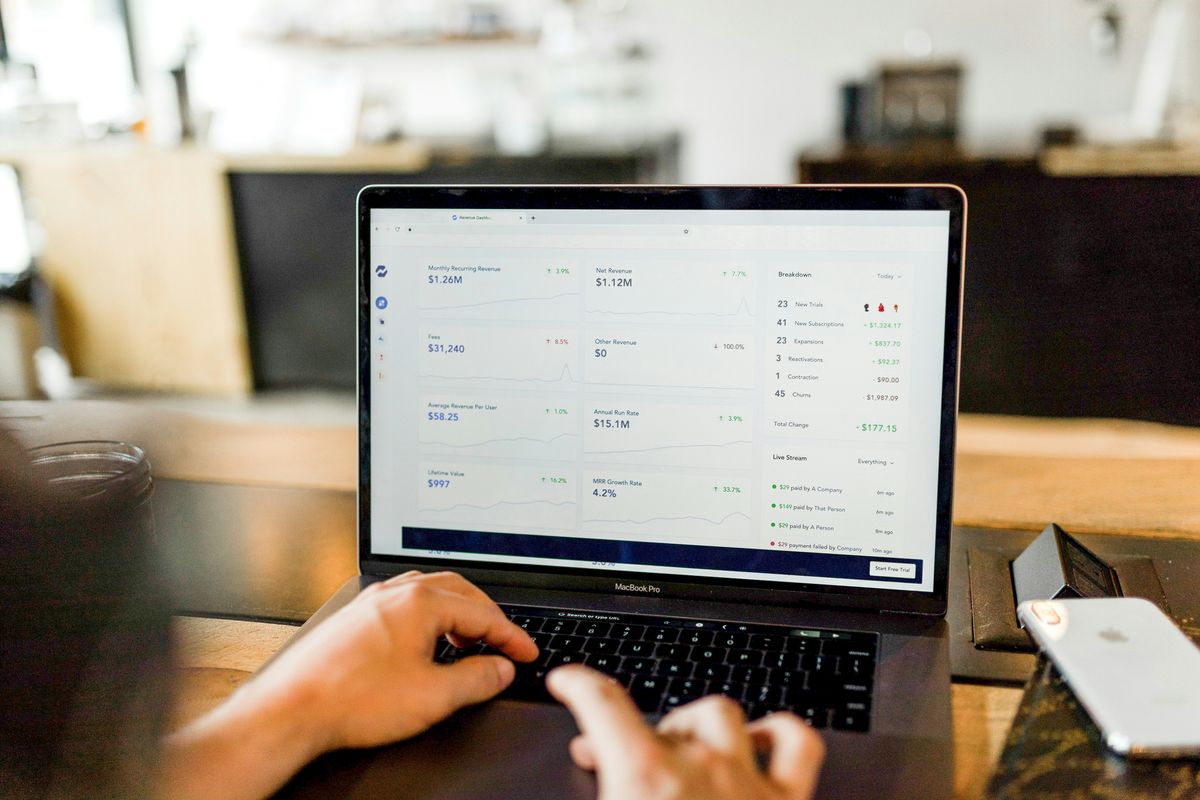The world of cryptocurrency exchanges is as dynamic as it is competitive. With a multitude of platforms to choose from, each offering unique features and services, selecting the right exchange can be a daunting task. This article delves into the intricacies of crypto exchanges, from understanding their landscape to making an informed decision tailored to your trading needs. We’ll explore the key considerations such as performance, reliability, market trends, and the pros and cons of different exchanges to help you navigate this complex ecosystem.
Key Takeaways
- Recognize the importance of exchange features, regional differences, and the emergence of DEXs in the crypto landscape.
- Assess exchange performance by examining review methodologies, user experience, security track records, and customer support.
- Stay ahead in the market by leveraging social media, understanding listing criteria of major exchanges, and anticipating new listings.
- Weigh the pros and cons of exchanges, considering fees, services, mobile app presence, and the choice between CEX and DEX.
- Follow a systematic approach to identify your trading goals, research crypto pools, and evaluate presales and project foundations.
Understanding the Landscape of Crypto Exchanges

Key Features of Leading Exchanges
When selecting a crypto exchange, it’s crucial to consider the key features that distinguish leading platforms. These features often include scalability, support quality, and reputation, which collectively contribute to a trader’s success. For instance, some exchanges are praised for their high scalability, providing traders with numerous opportunities to earn, while others are recognized for their exceptional support and excellent reputations.
- Scalability and efficiency
- Quality of customer support
- Reputation within the crypto community
It’s essential to understand that the best exchanges are not just about the number of cryptocurrencies listed but also about the precision and efficiency of the trading experience they offer.
Moreover, the integration with both centralized (CEX) and decentralized exchanges (DEX) is a significant advantage, as it allows traders to operate across 40 blockchains. However, the absence of a mobile app can be a considerable drawback for traders who prefer on-the-go access. It’s also worth noting that exchanges that work with DEX platforms are rare, making them a unique offering in the market.
Regional Variations in Crypto Exchanges
The landscape of crypto exchanges is not uniform across the globe. Different regions have exchanges that cater specifically to their market needs and regulatory environments. For instance, while Coinbase and Kraken are popular in the United States, exchanges like WazirX and ZebPay are more prominent in India.
| Region | Popular Exchanges |
|---|---|
| USA | Coinbase, Kraken |
| UK | Coinmama, Gemini |
| IN | WazirX, ZebPay |
| AU | Binance, Bittrex |
| CA | Bitstamp, KuCoin |
The choice of exchange can significantly impact your trading experience, as each platform offers different features and levels of efficiency.
It’s essential to consider these regional variations when choosing a crypto exchange, as they can influence factors such as available cryptocurrencies, payment methods, and customer support. A website page that compares various cryptocurrency platforms can provide detailed insights and recommendations, helping investors to make informed decisions.
The Rise of Decentralized Exchanges (DEX)
The emergence of Decentralized Exchanges (DEXs) has significantly altered the crypto trading landscape. DEXs operate on a peer-to-peer basis, allowing users to trade directly with one another without the need for an intermediary. This model promotes a higher degree of privacy and control over funds, as traders do not need to transfer their assets to the exchange. However, it’s important to recognize the trade-offs, such as typically lower liquidity and slower trade execution compared to centralized exchanges (CEXs).
DEXs are transforming the way we trade crypto assets by providing a platform that is inherently resistant to censorship and centralized control.
DEXs also enable features like cross-chain swaps, which allow for the exchange of assets across different blockchains. This capability is crucial for the interoperability of the crypto ecosystem and has been a key factor in the growth of DEXs. Despite their advantages, DEXs can be more complex to use and may require a greater understanding of blockchain technology.
Here is a quick comparison of some key aspects between DEXs and CEXs:
| Aspect | DEXs | CEXs |
|---|---|---|
| Control Over Funds | Users maintain control | Exchange controls funds |
| Anonymity | Higher degree of privacy | Less privacy |
| Liquidity | Generally lower | Generally higher |
| Trade Execution | Can be slower | Usually faster |
| User Experience | More complex interface | More user-friendly interface |
| Cross-Chain Swaps | Often supported | Rarely supported |
As the crypto market continues to evolve, the role of DEXs is likely to expand, challenging traditional models of asset trading and offering new opportunities for traders.
Evaluating Exchange Performance and Reliability

Review Methodologies and Ratings
When venturing into the world of cryptocurrency exchanges, understanding the review methodologies and ratings is crucial. CoinGape has developed a comprehensive system to evaluate crypto platforms, focusing on services, user experience, security, and more. Similarly, CryptoNewsZ’s methodology, while educational, emphasizes the importance of personal research and expert consultation.
It’s essential to consider the transparency and accuracy of content published by review platforms. Trust in a review is built on the expertise and research of the writers involved.
Below is a simplified representation of the review categories commonly used:
- Services Offered
- User Experience
- Security Measures
- Customer Support
- Payment Options
- Fees and Charges
- Promotions and Bonuses
Each category is meticulously analyzed to provide potential users with a clear picture of what to expect. For instance, a comparison of Bittrex and Binance reveals that while Bittrex is user-friendly, it may fall short in support and available coins. On the other hand, Binance faces regulatory challenges in the US, leading to its ban. Platforms like Coinbase are often recommended for their high liquidity and trading volume.
User Experience and Customer Support
When choosing a crypto exchange, user experience (UX) is a pivotal factor that can significantly influence a trader’s satisfaction and loyalty. A platform’s UX encompasses the ease of navigation, the intuitiveness of the interface, and the overall user journey from sign-up to trade execution.
Customer support also plays a vital role in the user experience. The availability of support 24/7, the responsiveness of the team, and the quality of assistance provided are key considerations. Here’s a quick overview of what to look for:
- 24/7 Support: Ensure that the exchange offers round-the-clock assistance.
- Responsiveness: Check how quickly the support team responds to inquiries.
- Quality of Assistance: Look for exchanges with a reputation for providing helpful and accurate support.
It’s not just about having support available, but about the support being capable and reliable, ready to resolve issues efficiently and effectively.
Remember, a crypto exchange with excellent customer service can greatly enhance your trading experience, especially when you encounter issues or have urgent questions.
Security Measures and History of Breaches
When venturing into the world of cryptocurrency trading, security is paramount. Exchanges are the custodians of users’ funds and personal information, making them prime targets for cyberattacks. It’s essential to assess the security measures an exchange implements, such as two-factor authentication, encryption, and cold storage of assets. Additionally, a platform’s history of breaches can be indicative of its security posture and resilience.
- Two-factor authentication (2FA) enhances account security by requiring a second form of verification.
- Encryption protects sensitive data from unauthorized access.
- Cold storage refers to keeping a reserve of cryptocurrencies offline, away from potential online threats.
The landscape of crypto security is ever-evolving, with exchanges continuously updating their defenses in response to new threats.
A history of breaches should not be a deal-breaker, but rather a point of research to understand how the platform responded and improved its security framework. The recent SEC regulations underscore the importance of robust cybersecurity practices, which can serve as a benchmark for evaluating an exchange’s commitment to safeguarding user assets.
The Importance of Staying Informed on Market Trends

Leveraging Social Media for Crypto Insights
In the dynamic realm of cryptocurrency, social media has emerged as a pivotal source of real-time insights. Thousands of crypto influencers share their thoughts and opinions on the markets daily, providing a wealth of information that can be leveraged for strategic decision-making.
By closely monitoring social media channels, traders can identify trending coins and gauge market sentiment. This can be particularly useful for anticipating new listings on major exchanges like Binance.
Here’s a simple way to utilize social media for crypto insights:
- Follow reputable crypto influencers and news outlets.
- Join dedicated crypto trading groups and forums.
- Set up alerts for crypto-related keywords and hashtags.
- Analyze the frequency and context of coin mentions.
Remember, while social media can offer valuable information, it’s crucial to cross-reference these insights with other sources to ensure a well-rounded view of the market.
Understanding Binance’s Listing Criteria
Binance, as a leading global exchange, has established a set of criteria that projects must meet to be considered for listing. Projects are expected to have a solid foundation, with an emphasis on active development, community engagement, and market demand. A well-designed token economy is also crucial for a project’s consideration.
- Basic Listing Criteria: Projects must demonstrate a strong foundation, active development, an engaged community, and adequate liquidity.
- Technical Criteria: Projects should be built on a robust technical foundation, ensuring consistent performance and compatibility with the exchange.
- Regulatory Compliance: Binance adheres to global regulations and requires projects to comply with these standards.
The listing process is rigorous, reflecting Binance’s commitment to investor protection and the legitimization of new projects. While meeting these criteria does not guarantee a listing, it significantly enhances a project’s chances.
Crypto founders or CEOs are required to personally initiate the listing process, underscoring the importance of direct communication in case of emergencies such as bugs or network issues. As the crypto landscape evolves, Binance’s stringent vetting process ensures that only projects with high potential and reliability are introduced to its vast user base.
Anticipating New Listings and Market Movements
The anticipation of new listings on platforms like Binance can be a thrilling aspect of the crypto market. Investors often seek to purchase new listings before they become public knowledge, aiming to capitalize on the initial surge in demand. However, this strategy requires a keen eye on social media and trend analysis, as Binance typically announces new listings mere hours before trading commences, leading to significant price movements.
To stay ahead, consider the following steps:
- Monitor Binance’s announcements and social media channels.
- Analyze market trends and community discussions.
- Join dedicated alerts groups for timely updates.
While no method guarantees early detection of new listings, these practices can enhance your chances of identifying potential opportunities.
Remember, the crypto market is unpredictable, and while a Binance listing can result in a high upside potential, it also carries risks. It’s crucial to balance the excitement of new listings with a sound investment strategy and risk management.
Pros and Cons of Different Crypto Exchanges

Comparing Fees, Accessibility, and Services
When venturing into the world of cryptocurrency exchanges, comparing fees, accessibility, and services is crucial for a tailored experience. Each platform has its unique fee structure, which can significantly impact your profitability. For instance, some exchanges offer a flat fee, while others have a tiered structure based on trading volume.
- Evaluate Fee Structure: Delve into the fee structure, including transaction fees, to ensure they align with your goals.
- User Interface: Consider the ease of use and accessibility of the platform’s interface.
- Service Range: Assess the variety of services offered, such as spot trading, futures, staking, or lending.
It’s essential to choose an exchange that not only meets your financial objectives but also provides a seamless and secure user experience.
The comparison of Robinhood and Coinbase highlights the importance of selecting an exchange based on your specific needs. While Coinbase offers a broad range of over 100 currencies, Robinhood focuses on a more limited selection, catering primarily to stock traders. This decision should be made with careful planning and consideration of your investment strategy.
The Impact of Mobile App Availability
In the dynamic realm of cryptocurrency trading, the availability of mobile apps is a game-changer for users who prefer to manage their assets on the move. Mobile app expansion is a critical strategy for exchanges aiming to enhance user accessibility and convenience. With plans to launch apps on both iOS and Android platforms, exchanges are acknowledging the necessity of catering to a mobile-savvy clientele.
The presence of a mobile app can significantly influence a user’s choice of exchange. For instance, Tor Wallet’s commitment to mobile support allows traders to stay connected and in control, regardless of their location. This flexibility is not just a luxury but a requirement for many in today’s fast-paced market.
However, not all exchanges have embraced mobile platforms. The absence of a mobile app can be a deal-breaker for users who value the ability to trade and monitor their investments on the go. It’s important to weigh the pros and cons of mobile app availability when choosing an exchange:
-
Pros:
- Global accessibility
- Increased earning potential
- Simple and straightforward user experience
-
Cons:
- Not cost-effective for small-volume traders
- Limited to no desktop application support
The decision to prioritize mobile app availability reflects an exchange’s commitment to user experience and modern trading demands.
Choosing Between CEX and DEX Platforms
When deciding between Centralized Exchanges (CEX) and Decentralized Exchanges (DEX), traders must weigh various factors. CEX platforms are known for their user-friendly interfaces and customer support, while DEX platforms offer a higher degree of privacy and direct peer-to-peer transactions.
-
CEX Pros:
- Scalable and efficient
- Excellent customer support
- Reputable and widely used
-
CEX Cons:
- Often subject to more regulatory scrutiny
- May have higher fees
- Central point of failure risk
-
DEX Pros:
- Enhanced privacy and security
- No need for KYC procedures
- Typically lower fees
-
DEX Cons:
- Less intuitive user interface
- Potentially lower liquidity
- No dedicated customer support
Making the right choice involves understanding your own trading preferences and risk tolerance. A CEX might be preferable for new traders seeking ease of use and support, while a DEX could be better for those prioritizing anonymity and control over their funds.
Making the Right Choice: A Step-by-Step Guide

Identifying Your Trading Needs and Goals
Before diving into the vast sea of crypto exchanges, it’s crucial to anchor your decisions to your trading objectives. Identify whether you’re in for the long haul or looking for quick gains; this will significantly influence your choice of platform. For instance, day trading and swing trading differ in time commitment and earnings potential. Day trading suits those seeking high profits, while swing trading is for stress-free trading alongside a job.
Consider the tools and features you’ll need to meet your goals. A comprehensive trading bot might be essential for some, while others may prioritize a platform with robust on-chain analytics or social trading features. Here’s a quick comparison of some popular trading tools:
| Tool | Key Feature | Subscription Fee | Availability |
|---|---|---|---|
| LEARN2TRADE | Scalable Bot, Forex & Crypto | 40-129 Pounds | Windows, Play Store |
| 3COMMAS | Multiple Exchange Support | $4-59/month | Windows |
| KRYLL | No-Code Trading Bots | Pay-As-You-Go | Windows, Play Store, App Store |
Making the right choice involves a blend of self-awareness and market understanding. Reflect on your trading style, risk tolerance, and the level of engagement you wish to have with the market.
Researching and Comparing Crypto Pools
When venturing into the realm of cryptocurrency mining, selecting the right mining pool is a pivotal decision that can significantly impact your mining efficiency and profitability. Researching and comparing crypto pools is a multi-faceted process that involves examining various attributes of each pool.
- Reputation: Look for pools with a proven track record of reliability and transparency.
- Hash Rate: Assess the pool’s computing power, as a higher hash rate can mean more consistent rewards.
- Fee Structure: Understand the fees associated with the pool, as they will affect your net earnings.
- Geographic Location: Consider the location of the pool’s servers, as closer proximity can reduce latency and improve mining efficiency.
- Payout Types: Check the payout methods and frequency to ensure they align with your preferences.
It’s essential to weigh these factors against your individual mining goals and hardware capabilities. A pool that suits one miner may not be the best fit for another, making personalized research indispensable.
Remember, the choice of a mining pool extends beyond mere profitability; it’s about finding a balance between earnings, security, and community engagement. Take the time to delve into user reviews, community forums, and expert analyses to make an informed decision.
Evaluating Presales and Project Foundations
When venturing into the realm of crypto presales, it’s essential to conduct thorough research and due diligence. The market is saturated with over 20,000 cryptocurrencies, and discerning the presales with high potential requires a strategic approach. Here are some key factors to consider:
- The speed at which the presale sells out.
- The project’s use case, fundamentals, and ability to solve real-world problems.
- The size and engagement level of the community supporting the project.
- The project’s long-term viability and growth potential.
- Any notable endorsements or partnerships.
It’s not just about the immediate buzz; evaluating the project’s foundation and potential for future growth is paramount.
For instance, a presale that has attracted a significant number of investors and raised substantial funds indicates a high demand and confidence in the project. Projects like $SCORP, which offer tangible benefits to token holders, are more likely to sustain interest and value over time. Comparing projects against Binance’s listing criteria can also provide insights into their potential success. A project with a solid foundation, such as $SPONGEV2, which has seen over 400 million tokens staked, is likely to be viewed favorably for exchange listings.
Conclusion
Navigating the competitive landscape of crypto exchanges requires a discerning eye and a strategic approach. From understanding the unique offerings of exchanges across different regions to staying abreast of market trends and new project listings, the right choice hinges on a multitude of factors. Whether it’s the efficiency and precision of top-tier exchanges like Coinbase and Binance or the tailored services of regional platforms, traders must weigh the pros and cons, including scalability, support, and reputation. CoinGape’s review methodology and the importance of community engagement and market demand, as highlighted by Binance’s listing criteria, underscore the need for thorough research. By keeping informed through social media and dedicated crypto channels, and considering factors like user experience, security, and fees, traders can make informed decisions to navigate the dynamic world of cryptocurrency exchanges effectively.
Frequently Asked Questions
What are the key features to look for in a leading crypto exchange?
Key features to consider include the exchange’s security measures, fee structure, range of available cryptocurrencies, trading volume, user interface, customer support, and any regional or regulatory differences that might affect your ability to trade.
How do decentralized exchanges (DEX) differ from traditional ones?
Decentralized exchanges operate without a central authority, offering direct peer-to-peer cryptocurrency transactions. This can increase privacy and security, but may also lead to less liquidity and slower transaction times compared to centralized exchanges (CEX).
What should I consider when evaluating an exchange’s performance and reliability?
Look at the exchange’s uptime history, speed of transactions, how the platform handles peak trading times, and if there have been any past security breaches or technical issues. Also, consider reviews and ratings from reputable sources.
How can I stay informed about new cryptocurrency listings and market trends?
To stay updated, follow social media channels like Crypto Twitter, YouTube, and Telegram groups of major exchanges. Keep an eye on announcements and community discussions, and consider insights from cryptocurrency news platforms and podcasts.
What are the pros and cons of using mobile apps for crypto trading?
Mobile apps offer convenience and the ability to trade on-the-go. However, they may lack some advanced trading features found on desktop platforms and could be more vulnerable to security risks if not properly managed.
How do I choose the right crypto exchange for my trading needs?
Identify your trading goals, whether it’s day trading, long-term investing, or something else. Research exchanges to compare fees, supported cryptocurrencies, and user experience. Consider the exchange’s reputation, security, and any geographical restrictions.





